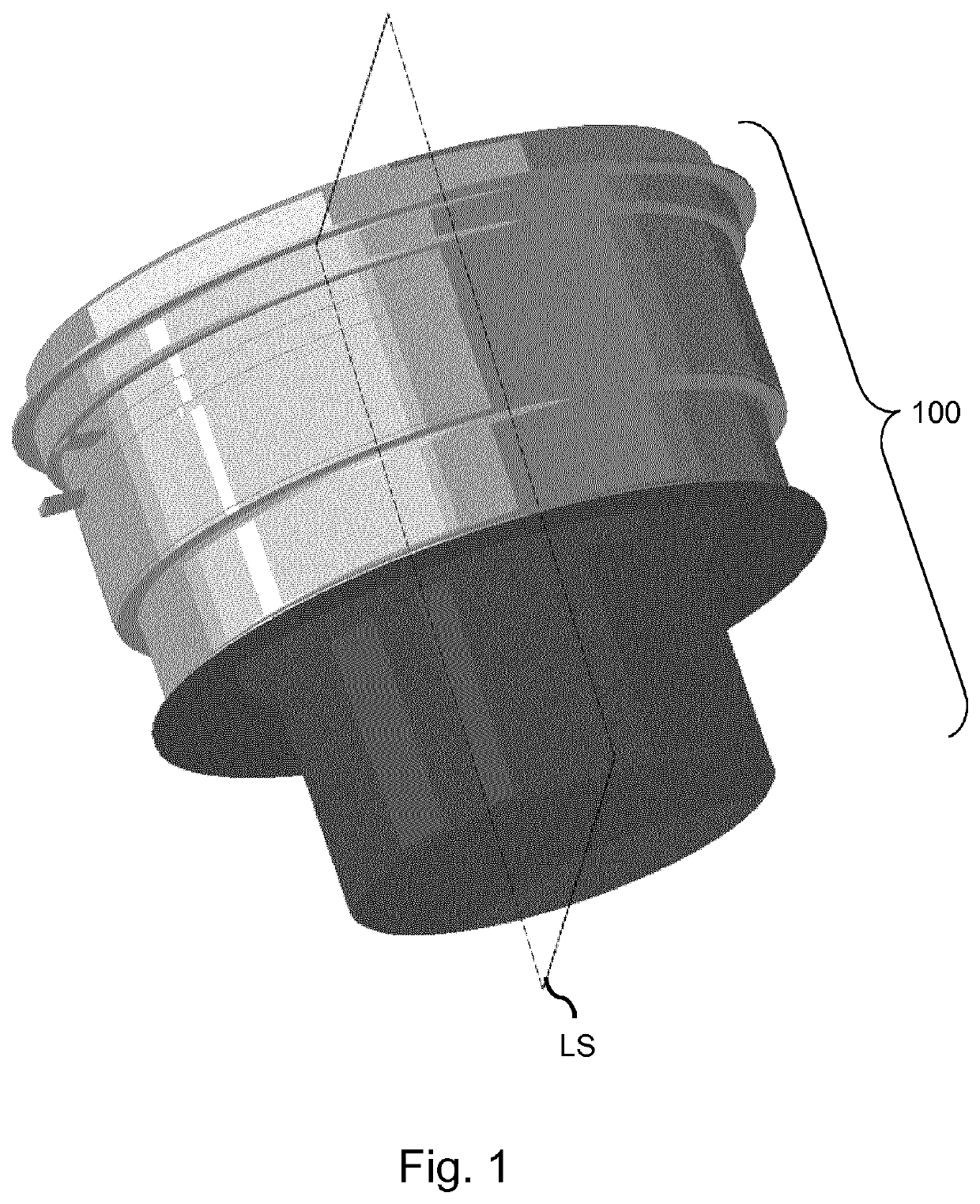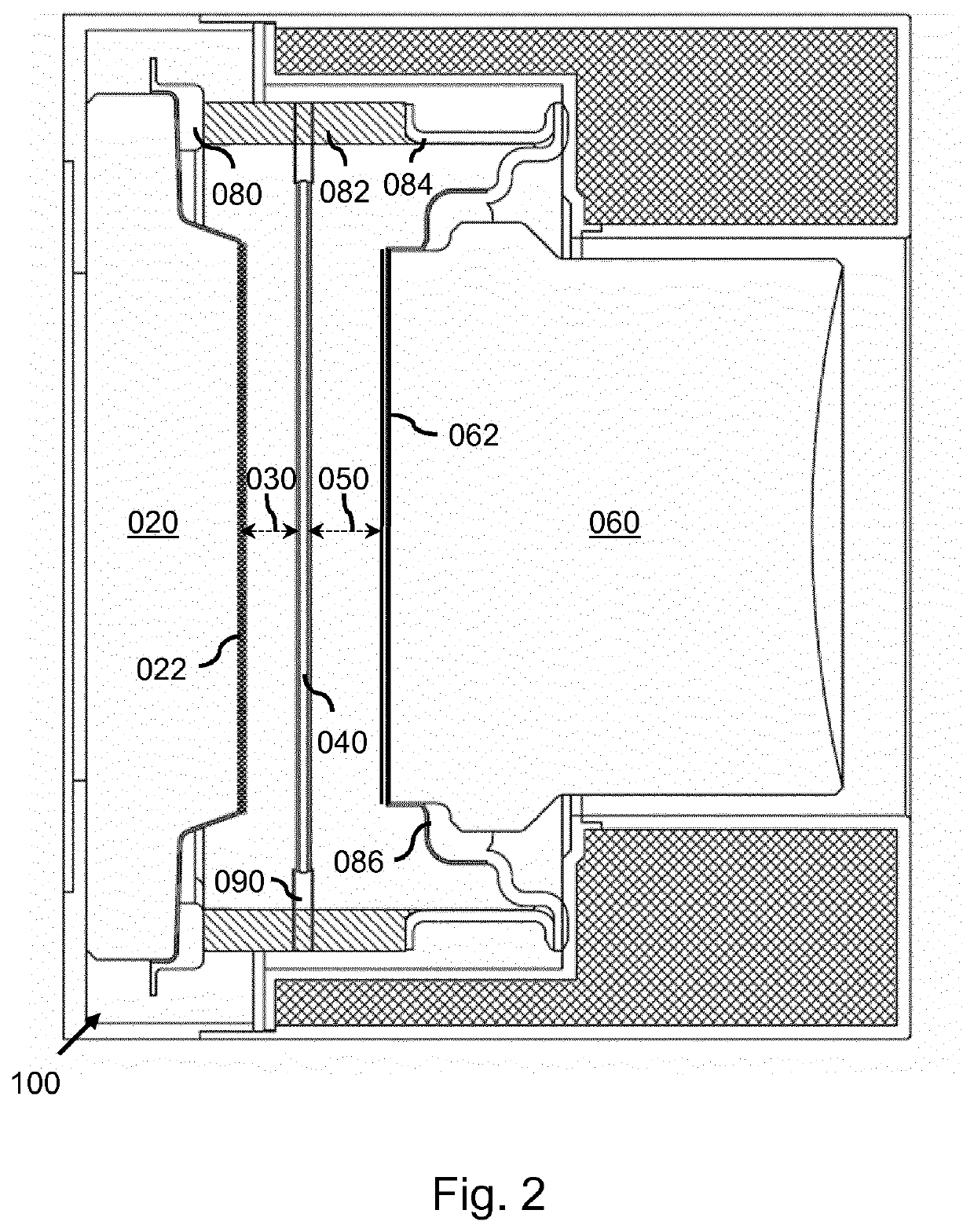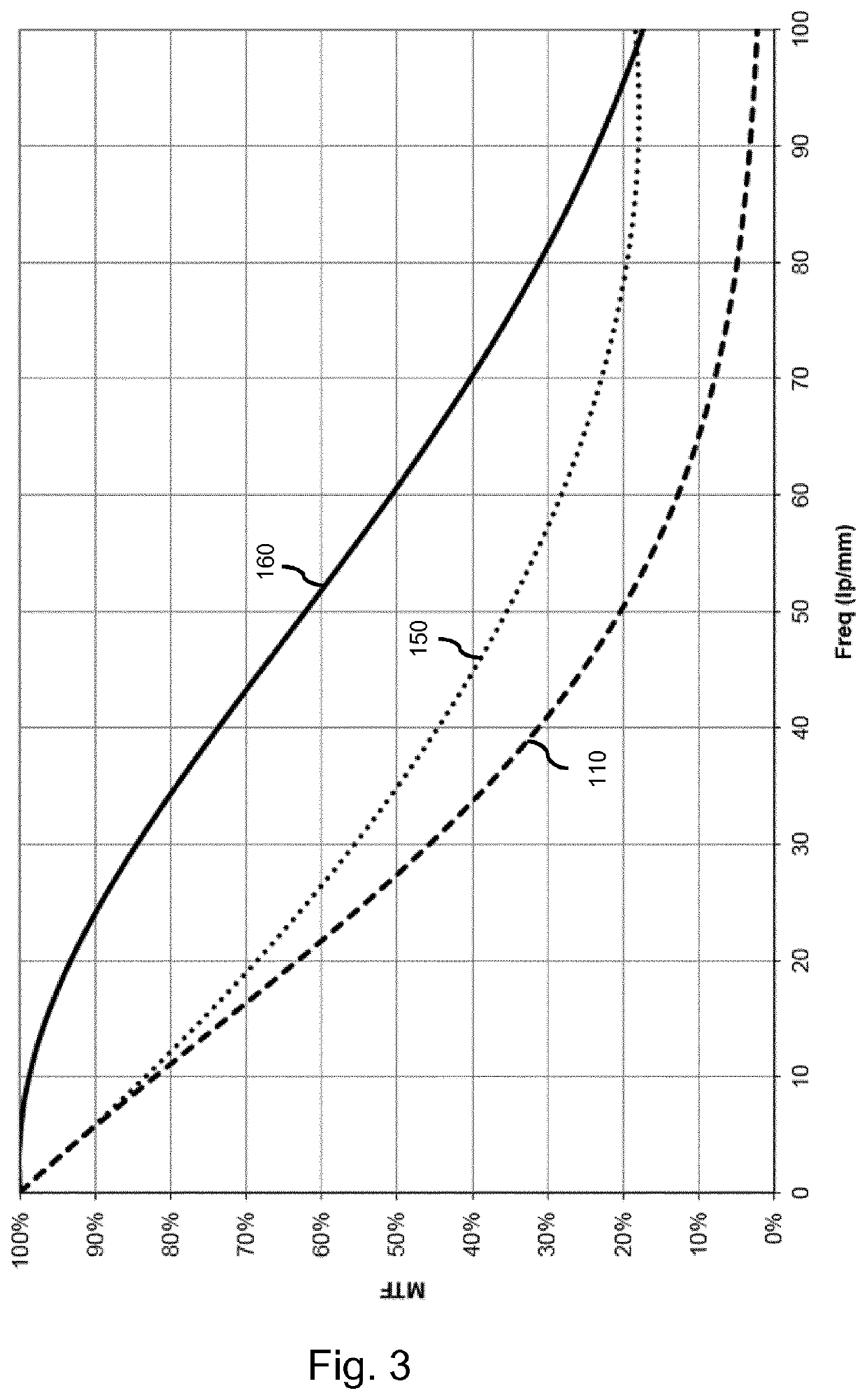Image intensifier for night vision device
a technology of image intensifier and night vision, which is applied in the direction of multiplier electrode arrangement, instrument, electric multiplier tube, etc., can solve the problem of low image quality of visible image on the phosphorous screen, e.g., as characterized by a mtf, and achieve the effect of improving image quality
- Summary
- Abstract
- Description
- Claims
- Application Information
AI Technical Summary
Benefits of technology
Problems solved by technology
Method used
Image
Examples
Embodiment Construction
[0079]FIGS. 1 and 2 show an image intensifier in the form of an image intensifier (I2) tube 100. The I2 tube as shown is known per se from the field of night vision devices, and is used in the following as a non-limiting example of an image intensifier.
[0080]Indicated in FIG. 1 is a longitudinal plane LS. FIG. 2 shows a longitudinal section of the I2 tube 100 along this plane LS. It can be seen that the I2 tube 100 comprises an input lens 020 with a photosensitive layer 022 forming a photocathode (henceforth referred to as photocathode 022, or in short cathode), an electron multiplier 040 in the form of a micro channel plate, and a phosphorous screen 062 on top of a glass- or fiber-optic output lens 060 acting as an anode (and henceforth also simply referred to as anode). Further illustrated in FIG. 2 are, by way of dashed arrows, the cathode gap 030, referring to the input gap or channel between the photocathode 022 and the electron multiplier 040, as well as the anode gap 050, ref...
PUM
| Property | Measurement | Unit |
|---|---|---|
| band gap | aaaaa | aaaaa |
| diffusion length | aaaaa | aaaaa |
| thickness | aaaaa | aaaaa |
Abstract
Description
Claims
Application Information
 Login to View More
Login to View More - R&D
- Intellectual Property
- Life Sciences
- Materials
- Tech Scout
- Unparalleled Data Quality
- Higher Quality Content
- 60% Fewer Hallucinations
Browse by: Latest US Patents, China's latest patents, Technical Efficacy Thesaurus, Application Domain, Technology Topic, Popular Technical Reports.
© 2025 PatSnap. All rights reserved.Legal|Privacy policy|Modern Slavery Act Transparency Statement|Sitemap|About US| Contact US: help@patsnap.com



